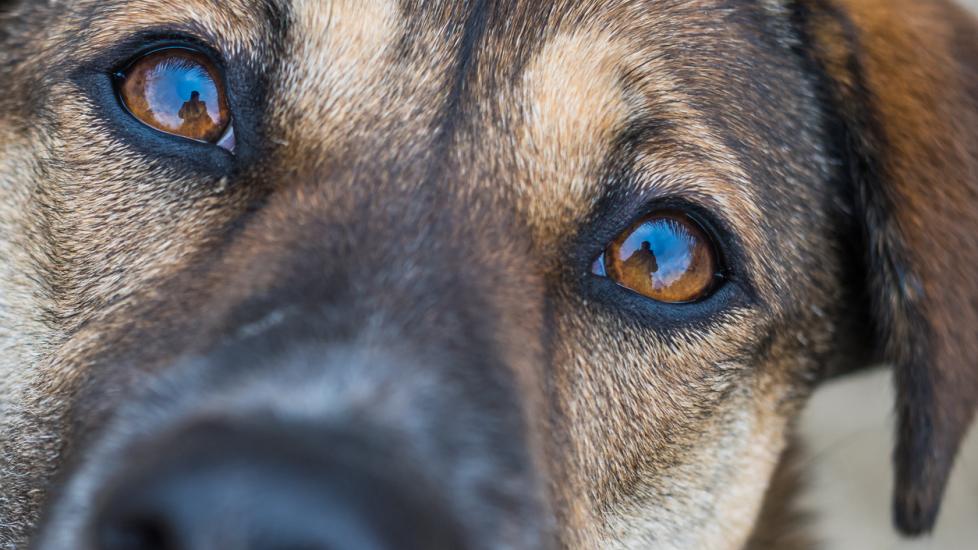Title: Understanding and Managing Canine Iris Atrophy
Introduction:
The iris, a critical component of the eye, plays an essential role in controlling light entering the canine pupil. It functions like a shutter, adjusting to maintain sharp focus on objects at different distances. However, when this delicate structure degenerates or thins out due to aging or other factors, it leads to a condition known as iris atrophy. This article aims to shed light on what iris atrophy is, its causes, symptoms, diagnosis, treatment options, and preventive measures for dogs affected by this condition.
What Is Iris Atrophy?
Iris atrophy refers to a thinning and weakening of the muscles that control the size of the pupil. As these muscles become less efficient, they may cause issues with your dog’s vision. In severe cases, the iris can adhere to nearby structures within the eye, potentially leading to complications such as glaucoma.
Causes:
Aging is one common cause of iris atrophy; however, certain breeds are predisposed to developing this condition due to genetic factors (e.g., Boston Terriers). Other possible reasons include chronic inflammation from uveitis or cataract surgery complications. Some medications used to treat heartworm disease have also been associated with drug-induced iris atrophy.
Symptoms:
Owners might notice changes in their pet’s behavior, including increased sensitivity to bright lights (photophobia) or squinting. They might see visible signs of the condition too—the iris could appear pale, translucent, or clouded over. If left untreated, secondary problems like glaucoma can develop, which can be painful and lead to permanent damage if not addressed promptly.
Diagnosis:
Veterinarians typically diagnose iris atrophy through a thorough physical examination followed by specialized tests like tonometry (to measure intraocular pressure) and ophthalmoscopy (visual inspection using an instrument called an ophthalmoscope). These procedures help identify any underlying conditions contributing to the problem and provide information about how advanced the condition is.
Treatment and Management:
Management strategies vary depending on the severity of the case but often involve prescription eyedrops to reduce inflammation and prevent adhesions between the iris and lens. In some instances, surgical intervention might be necessary to correct significant abnormalities or detachments caused by atrophic tissue. Regular check-ups with your vet are crucial to monitor progression and ensure prompt action should any complications arise.
Prevention:
While you cannot stop your dog from getting older, there are steps you can take to minimize the risk of iris atrophy. Ensure regular visits to the veterinarian for early detection of potential health issues. Consider maintaining a healthy weight for your dog since obesity can exacerbate many conditions affecting joints and organs, including those related to eyesight. Additionally, follow all medication instructions carefully and avoid giving drugs that may induce adverse reactions without consulting with a professional first.
Conclusion:
In conclusion, understanding and managing canine iris atrophy requires patience, diligence, and close collaboration between pet owners and veterinary professionals. By recognizing the signs early on and seeking appropriate medical advice, we can support our furry companions in living comfortable lives despite having compromised ocular function. Remember that every dog’s situation is unique; thus, individualized care plans tailored to each patient will yield the best outcomes.
